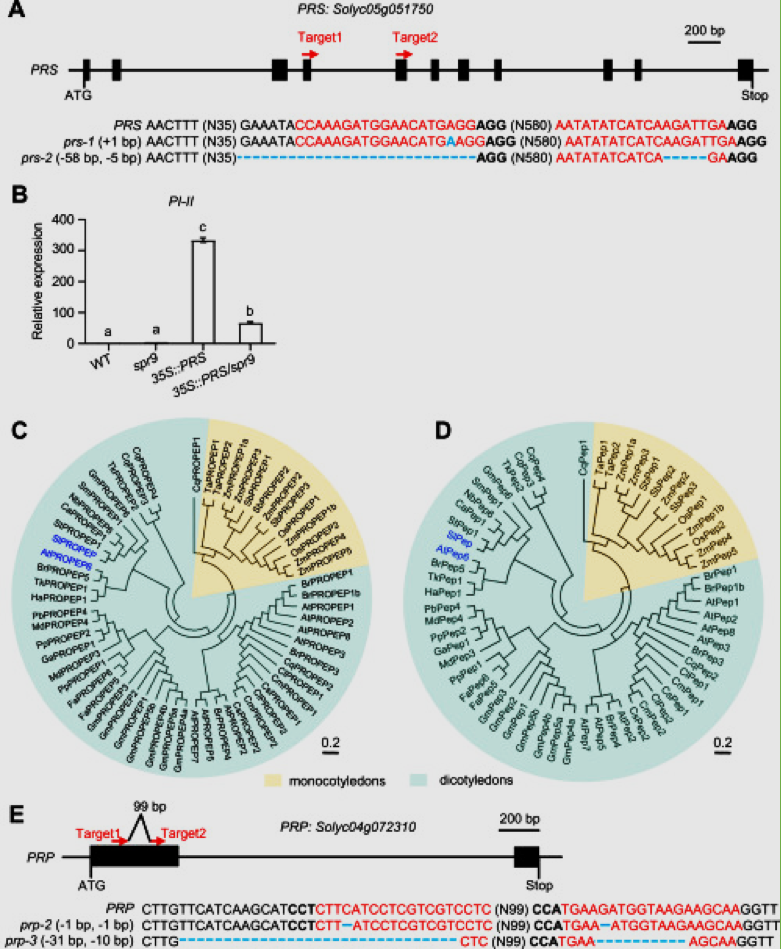BULLETIN 1
Researchers Release First Complete Telomere-to-Telomere Genome of Lettuce

A research team from Peking University Institute of Advanced Agricultural Sciences has published a complete telomere-to-telomere (T2T) genome assembly of lettuce. In a paper published in Plant Communications, the team revealed for the first time the 2.59Gb T2T complete and gap-free genome sequence of lettuce.
The research also reveals the highly complex structural characteristics of the lettuce genome and the repetitive sequence characteristics of the centromere. Also for the first time, the three-dimensional genome conformation and epigenetic characteristics of lettuce are revealed, providing important insights into the complexity of the genome of higher plants. In addition, this study systematically predicted the disease resistance genes of the lettuce nucleotide-binding site leucine-rich repeat (NLR) family and analyzed their expression patterns in gray mold infection, providing new clues for the study of the disease resistance mechanism of lettuce.
The study used a highly pure Romaine lettuce variety PKU06 to generate a total of 112.4× coverage of PacBio high-fidelity (HiFi) long reads and 42.9× coverage of Oxford Nanopore Technology (ONT) ultra-long reads, as well as 118.8× coverage of Hi-C reads, for assembling the complete genome of lettuce. The final genome size is 2.59 Gb, Contig N50 is 320.7Mb, and 384 gaps in the Salinas version, which significantly improves the quality of the lettuce genome assembly.
For more details, read the article in Lifeasible.
https://www.isaaa.org/kc/cropbiotechupdate/article/default.asp?ID=20984
BULLETIN 2
COGEM Concludes Import and Processing of GM Soybean MON 87708 Does not Pose an Environmental Risk in The Netherlands
COGEM Concludes Import and Processing of GM Soybean MON 87708 Does not Pose an Environmental Risk in The Netherlands

The Netherlands Commission on Genetic Modification (COGEM) released the advice for the renewal of the authorization for importing and processing genetically modified (GM) soybean MON 87708, which was previously authorized in 2011 and valid for 10 years.
The authorization holders filed a renewal application and submitted monitoring reports, updated bioinformatic analyses, and a systematic literature search. The COGEM advice has the following findings on the herbicide tolerant soybean:
• The molecular characterization of soybean MON 87708 has been updated and meets the criteria of COGEM;
• The updated bioinformatics analyses, literature review, and monitoring reports do not give any indication of potential environmental risk;
• The overall conclusion from COGEM states that the import and processing of GM soybean MON 87708 poses a negligible risk to the environment in the Netherlands.
For more information, read the COGEM advice.
See https://www.isaaa.org/kc/cropbiotechupdate/article/default.asp?ID=20985
The authorization holders filed a renewal application and submitted monitoring reports, updated bioinformatic analyses, and a systematic literature search. The COGEM advice has the following findings on the herbicide tolerant soybean:
• The molecular characterization of soybean MON 87708 has been updated and meets the criteria of COGEM;
• The updated bioinformatics analyses, literature review, and monitoring reports do not give any indication of potential environmental risk;
• The overall conclusion from COGEM states that the import and processing of GM soybean MON 87708 poses a negligible risk to the environment in the Netherlands.
For more information, read the COGEM advice.
See https://www.isaaa.org/kc/cropbiotechupdate/article/default.asp?ID=20985
SCIENTIFIC NEWS
Peptide REF1 is a local wound signal promoting plant regeneration
Wentao Yang, Huawei Zhai, Fangming Wu, Lei Deng, Yu Chao, Xianwen Meng, Qian Chen, Chenhuan Liu, Xiaomin Bie, Chuanlong Sun, Yang Yu, Xiaofei Zhang, Xiaoyue Zhang, Zeqian Chang, Min Xue , Yajie Zhao, Xiangbing Meng, Boshu Li, Xiansheng Zhang, Dajian Zhang, Xiangyu Zhao, Caixia Gao, Jiayang Li, Chuanyou Li
Cell; 2024 Jun 6; 187(12):3024-3038.e14. doi: 10.1016/j.cell.2024.04.040.
Wentao Yang, Huawei Zhai, Fangming Wu, Lei Deng, Yu Chao, Xianwen Meng, Qian Chen, Chenhuan Liu, Xiaomin Bie, Chuanlong Sun, Yang Yu, Xiaofei Zhang, Xiaoyue Zhang, Zeqian Chang, Min Xue , Yajie Zhao, Xiangbing Meng, Boshu Li, Xiansheng Zhang, Dajian Zhang, Xiangyu Zhao, Caixia Gao, Jiayang Li, Chuanyou Li
Cell; 2024 Jun 6; 187(12):3024-3038.e14. doi: 10.1016/j.cell.2024.04.040.

Abstract
Plants frequently encounter wounding and have evolved an extraordinary regenerative capacity to heal the wounds. However, the wound signal that triggers regenerative responses has not been identified. Here, through characterization of a tomato mutant defective in both wound-induced defense and regeneration, we demonstrate that in tomato, a plant elicitor peptide (Pep), REGENERATION FACTOR1 (REF1), acts as a systemin-independent local wound signal that primarily regulates local defense responses and regenerative responses in response to wounding. We further identified PEPR1/2 ORTHOLOG RECEPTOR-LIKE KINASE1 (PORK1) as the receptor perceiving REF1 signal for plant regeneration. REF1-PORK1-mediated signaling promotes regeneration via activating WOUND-INDUCED DEDIFFERENTIATION 1 (WIND1), a master regulator of wound-induced cellular reprogramming in plants. Thus, REF1-PORK1 signaling represents a conserved phytocytokine pathway to initiate, amplify, and stabilize a signaling cascade that orchestrates wound-triggered organ regeneration. Application of REF1 provides a simple method to boost the regeneration and transformation efficiency of recalcitrant crops.
See https://pubmed.ncbi.nlm.nih.gov/38781969/
Plants frequently encounter wounding and have evolved an extraordinary regenerative capacity to heal the wounds. However, the wound signal that triggers regenerative responses has not been identified. Here, through characterization of a tomato mutant defective in both wound-induced defense and regeneration, we demonstrate that in tomato, a plant elicitor peptide (Pep), REGENERATION FACTOR1 (REF1), acts as a systemin-independent local wound signal that primarily regulates local defense responses and regenerative responses in response to wounding. We further identified PEPR1/2 ORTHOLOG RECEPTOR-LIKE KINASE1 (PORK1) as the receptor perceiving REF1 signal for plant regeneration. REF1-PORK1-mediated signaling promotes regeneration via activating WOUND-INDUCED DEDIFFERENTIATION 1 (WIND1), a master regulator of wound-induced cellular reprogramming in plants. Thus, REF1-PORK1 signaling represents a conserved phytocytokine pathway to initiate, amplify, and stabilize a signaling cascade that orchestrates wound-triggered organ regeneration. Application of REF1 provides a simple method to boost the regeneration and transformation efficiency of recalcitrant crops.
See https://pubmed.ncbi.nlm.nih.gov/38781969/

Figure: Identification of Pep ortholog in tomato
.png)











